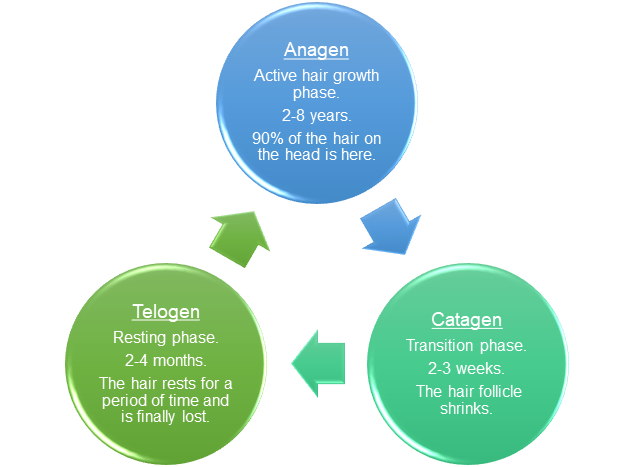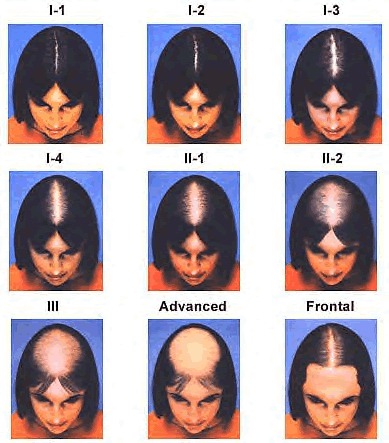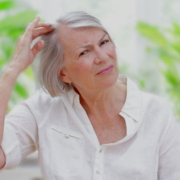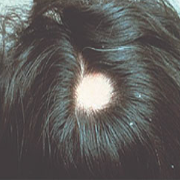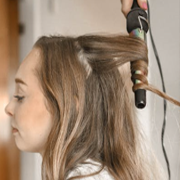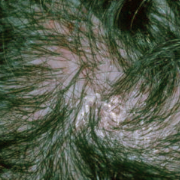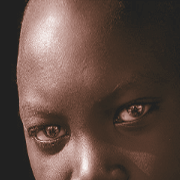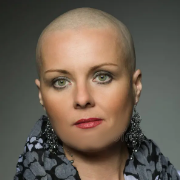Female Hair Loss Patterns
A variety of causes are behind female hair loss. Hormonal shifts, genetics, stress, diet, and medication are just a few of the triggers of hair loss in women. That is why it is important for women suffering from thinning or falling hair to undergo a comprehensive evaluation including medical and lifestyle evaluation to identify the chief complaint, determine root causes and rule out risk factors is undertaken. The Hair Loss program at Ruthie Harper MD evaluates ALL of the factors that lead to female hair loss and creates a customized and integrated approach that provides you with the most effective solution designed just for you.
Causes of Female Hair Loss
There are a variety of reasons why hair loss can occur in women, including:
- Thyroid problems
- Polycystic ovary syndrome (PCOS)
- Autoimmune hair loss
- Female pattern hair loss (Androgenetic alopecia)
- Fungal infections (Ringworm)
- Hormonal shifts
- Pregnancy
- Anemia
- Medication, such as birth control pills
- Dieting
- Hair styling
- Trichotillomania
- Cancer treatment
- Stress
Female Hair Growth
The average scalp has 100,000 hairs. Each follicle produces a single hair that grows at a rate of half an inch per month during the normal hair growth cycle (1). Only about 10% of the strands are in transition or resting phase at any one time. Hair grows about 6 inches a year for most people.
According to the American Academy of Dermatology, most people lose anywhere from 50 to 100 strands of hair each day (2), and up to 250 strands when hair is washed. Because female hair tends to be longer, women notice when significant hair loss occurs. They will observe hair on their pillow or lots of hair in their comb when styling which becomes exaggerated when abnormal amounts of hair loss are occurring.
More than 50% of women (3) report significant hair loss or thinning at some point in their lives. This means that hair loss will affect 40 million women. Because there are numerous causes of female hair loss, the patterns of hair loss in women vary.
Patterns of Female Hair Loss
The Savin scale is used to document female pattern baldness, which affects about 30 million American women. Women tend to notice thinning on the top third to one half of the scalp with maintenance of the hairline and will see a part that is gradually becoming wider.
Sometimes they will see more of their scalp than normal when their hair is pulled back. Men’s hair will tend to recede from the forehead or the crown of the head over the years.
.
Female Hair Loss Treatments
Androgenic Alopecia (AGA)
AGA or female pattern hair loss is due to genetic causes. Women who experience AGA notice decreasing volume of hair and general thinning of hair on the top of the scalp or the temples, while the front hairline does not recede. The diagnostic “pull test” will be negative in this type of hair loss.
The Savin scale (1992) (4) is used to document female hair loss patterns. Unlike men, who tend to recede from the forehead or the crown of the head, women tend to notice thinning on the top third to one half of the scalp, while the front hair line remains intact.
Alopecia Areata
Alopecia areata (5) is an autoimmune disease, which occurs when the body’s own immune system mistakenly attacks healthy hair follicles and destroys them. This type of hair loss is characterized by:
Patchy, bold spots. You will notice small, round, smooth, bare patches on your scalp. “Exclamation mark” hairs: Often, short hair grows on the edges of the bald spots, narrower at the bottom, like an exclamation mark.
Image Source: C. CAROLYN THIEDKE, M.D., Medical University of South Carolina, Charleston, South Carolina. Am Fam Physician. 2003 Mar 1;67(5):1007-1014.
Traction Alopecia
Traction alopecia (9) can be caused by certain hairstyles, such as cornrows, or tight ponytails and certain treatments such as hair dyes, chemical treatments or flat irons. It is more common among African Americans.
Patterns of traction alopecia may include:
Receding hairline around the forehead, temples or back of the neck
• Wide hair parting
• Redness, itching, scars, pimples on the scalp
• Patches of broken hair
• In more advanced cases, patches of scarred skin
Scarring Alopecia
Scarring alopecia (11) causes hair loss that is possibly permanent and irreversible. This pattern of hair loss is characterized by the destruction of hair follicles which are replaced by scar tissues and atrophy of the skin.
Scarring alopecia can be associated with other medical conditions, such as lupus.
Image source: Bender, A., & Cohen, B. (2013). Chapter 8 – Disorders of the Hair and Nails. Pediatric Dermatology, (4), 211-239. doi: 10.1016/B978-0-7234-3655-3.00008-4
Alopecia Totalis
Alopecia totalis (6) is the advanced form of alopecia areata, where a person loses 30%-50% of their hair within a month. This type of hair loss is characterized by complete baldness of the scalp. The diagnostic “pull test” will be positive.
Anagen Effluvium Caused By Cancer Therapy
Anagen effluvium (7) is often due to chemotherapy. After 2 weeks of chemotherapy, approximately 90% or more of the hairs can fall out while hair is still in the anagen phase. Good news? Hair grows again as soon as the cancer treatment is over.
Fungal Infections
Ringworm (8) is a fungal infection that can affect the scalp, triggering a distinct pattern of hair loss that occurs in itchy, round patches. Bald areas can appear scaly and red. The fungus may be visible with the naked eye or could be seen after a biopsy.
Image source: Shy, R. (2007). Tinea Corporis and Tinea Capitis. Pediatrics In Review, 28(5), 164-174. doi: 10.1542/pir.28-5-164
Trichotillomania
Trichotillomania (10) is a psychological condition that causes a person to compulsively pull hair from the scalp, eyebrows, or eyelashes. The pattern of this hair loss is characterized by patchy, possibly scarring spots on the scalp.
SOURCES:
1 – https://www.ncbi.nlm.nih.gov/pmc/articles/PMC4755418/
2 – https://www.aad.org/public/skin-hair-nails/hair-care/hair-loss-vs-hair-shedding
3 – https://www.ncbi.nlm.nih.gov/pmc/articles/PMC2684510/
4 – https://www.ncbi.nlm.nih.gov/pmc/articles/PMC4812885/
5 – https://www.aad.org/public/diseases/hair-and-scalp-problems/alopecia-areata
6 – https://www.ncbi.nlm.nih.gov/pubmed/28378336
7 – https://www.ncbi.nlm.nih.gov/books/NBK482293/
8 – https://www.ncbi.nlm.nih.gov/pmc/articles/PMC1125423/
9 – https://www.ncbi.nlm.nih.gov/books/NBK470434/
10 – https://www.ncbi.nlm.nih.gov/pmc/articles/PMC5328413/
11 – https://www.ncbi.nlm.nih.gov/pmc/articles/PMC3855115/


